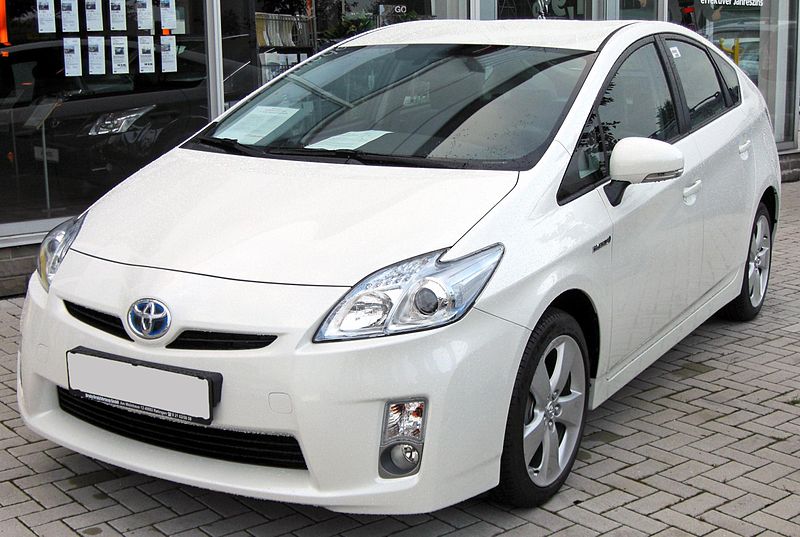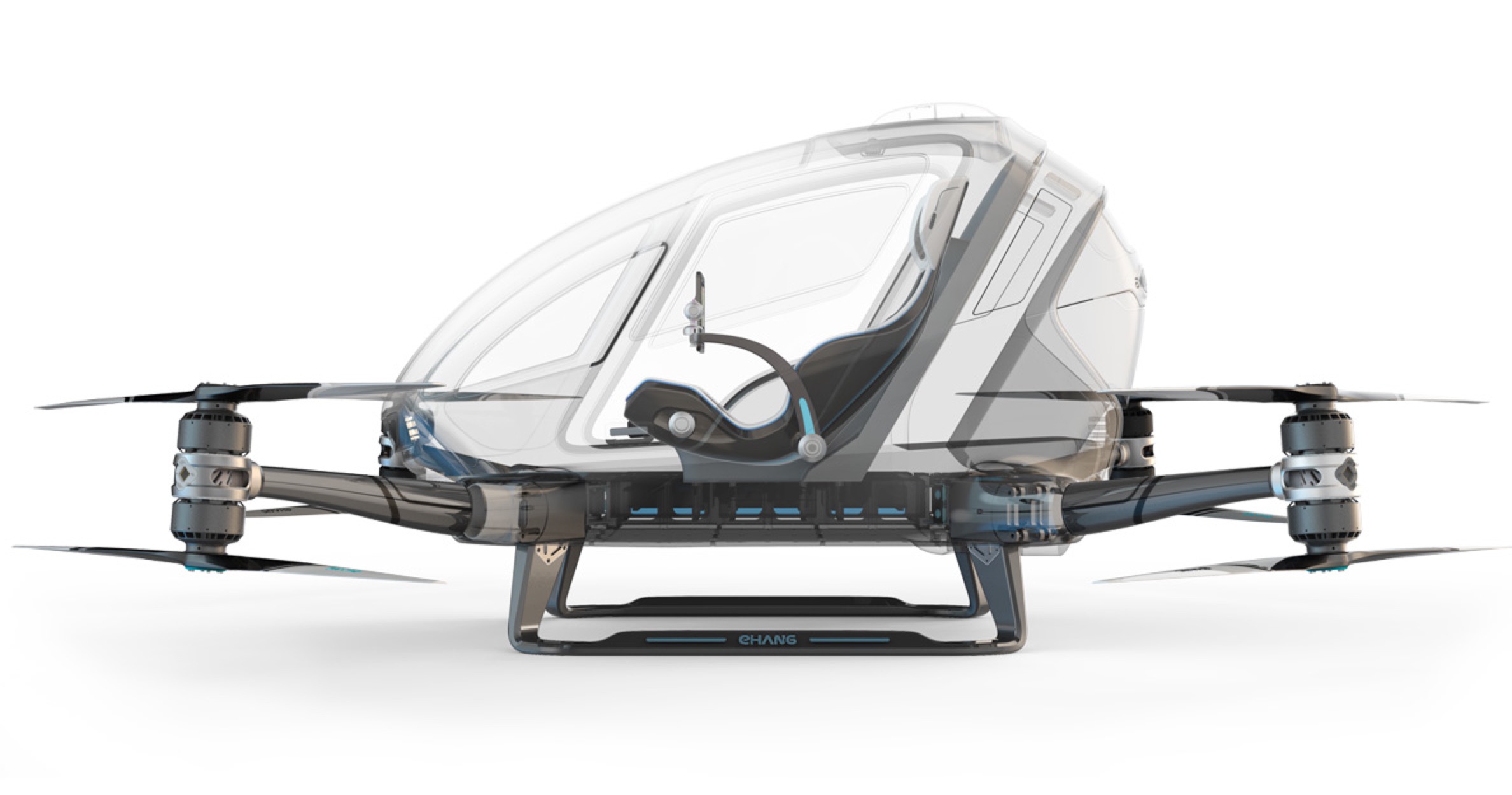
Your Toyota Prius, or other electric vehicle, is a good environmental citizen. It helps reduce pollution and carbon emissions and does so rather efficiently. You and other eco-conscious owners should be proud.
But wait, not so fast. Your electric car may have a low carbon footprint, but it is a silent killer in waiting. It may be efficient, however it is far too quiet, and is thus somewhat of a hazard for pedestrians, cyclists and other motorists — they don’t hear it approaching.
Cars like the Prius are so quiet — in fact too quiet, for our own safety. So, enterprising engineers are working to add artificial noise to the next generations of almost silent cars. The irony is not lost: after years of trying to make cars quieter, engineers are now looking to make them noisier.
Perhaps, the added noise could be configurable as an option for customers — a base option would sound like a Citroen CV, a high-end model could sound like, well, a Ferrari or a classic Bugatti. Much better.
From Technology Review:
It was a pleasant June day in Munich, Germany. I was picked up at my hotel and driven to the country, farmland on either side of the narrow, two-lane road. Occasional walkers strode by, and every so often a bicyclist passed. We parked the car on the shoulder and joined a group of people looking up and down the road. “Okay, get ready,” I was told. “Close your eyes and listen.” I did so and about a minute later I heard a high-pitched whine, accompanied by a low humming sound: an automobile was approaching. As it came closer, I could hear tire noise. After the car had passed, I was asked my judgment of the sound. We repeated the exercise numerous times, and each time the sound was different. What was going on? We were evaluating sound designs for BMW’s new electric vehicles.
Electric cars are extremely quiet. The only sounds they make come from the tires, the air, and occasionally from the high-pitched whine of the electronics. Car lovers really like the silence. Pedestrians have mixed feelings, but blind people are greatly concerned. After all, they cross streets in traffic by relying upon the sounds of vehicles. That’s how they know when it is safe to cross. And what is true for the blind might also be true for anyone stepping onto the street while distracted. If the vehicles don’t make any sounds, they can kill. The United States National Highway Traffic Safety Administration determined that pedestrians are considerably more likely to be hit by hybrid or electric vehicles than by those with an internal-combustion engine. The greatest danger is when the hybrid or electric vehicles are moving slowly: they are almost completely silent.
Adding sound to a vehicle to warn pedestrians is not a new idea. For many years, commercial trucks and construction equipment have had to make beeping sounds when backing up. Horns are required by law, presumably so that drivers can use them to alert pedestrians and other drivers when the need arises, although they are often used as a way of venting anger and rage instead. But adding a continuous sound to a normal vehicle because it would otherwise be too quiet is a challenge.
What sound would you want? One group of blind people suggested putting some rocks into the hubcaps. I thought this was brilliant. The rocks would provide a natural set of cues, rich in meaning and easy to interpret. The car would be quiet until the wheels started to turn. Then the rocks would make natural, continuous scraping sounds at low speeds, change to the pitter-patter of falling stones at higher speeds. The frequency of the drops would increase with the speed of the car until the rocks ended up frozen against the circumference of the rim, silent. Which is fine: the sounds are not needed for fast-moving vehicles, because then the tire noise is audible. The lack of sound when the vehicle is not moving would be a problem, however.
The marketing divisions of automobile manufacturers thought the addition of artificial sounds would be a wonderful branding opportunity, so each car brand or model should have its own unique sound that captured just the car personality the brand wished to convey. Porsche added loudspeakers to its electric car prototype to give it the same throaty growl as its gasoline-powered cars. Nissan wondered whether a hybrid automobile should sound like tweeting birds. Some manufacturers thought all cars should sound the same, with standardized noises and sound levels, making it easier for everyone to learn how to interpret them. Some blind people thought they should sound like cars—you know, gasoline engines.
Skeuomorphic is the technical term for incorporating old, familiar ideas into new technologies, even though they no longer play a functional role. Skeuomorphic designs are often comfortable for traditionalists, and indeed the history of technology shows that new technologies and materials often slavishly imitate the old for no apparent reason except that it’s what people know how to do. Early automobiles looked like horse-driven carriages without the horses (which is also why they were called horseless carriages); early plastics were designed to look like wood; folders in computer file systems often look like paper folders, complete with tabs. One way of overcoming the fear of the new is to make it look like the old. This practice is decried by design purists, but in fact, it has its benefits in easing the transition from the old to the new. It gives comfort and makes learning easier. Existing conceptual models need only be modified rather than replaced. Eventually, new forms emerge that have no relationship to the old, but the skeuomorphic designs probably helped the transition.
When it came to deciding what sounds the new silent automobiles should generate, those who wanted differentiation ruled the day, yet everyone also agreed that there had to be some standards. It should be possible to determine that the sound is coming from an automobile, to identify its location, direction, and speed. No sound would be necessary once the car was going fast enough, in part because tire noise would be sufficient. Some standardization would be required, although with a lot of leeway. International standards committees started their procedures. Various countries, unhappy with the normally glacial speed of standards agreements and under pressure from their communities, started drafting legislation. Companies scurried to develop appropriate sounds, hiring psychologists, Hollywood sound designers, and experts in psychoacoustics.
The United States National Highway Traffic Safety Administration issued a set of principles along with a detailed list of requirements, including sound levels, spectra, and other criteria. The full document is 248 pages. The document states:
This standard will ensure that blind, visually-impaired, and other pedestrians are able to detect and recognize nearby hybrid and electric vehicles by requiring that hybrid and electric vehicles emit sound that pedestrians will be able to hear in a range of ambient environments and contain acoustic signal content that pedestrians will recognize as being emitted from a vehicle. The proposed standard establishes minimum sound requirements for hybrid and electric vehicles when operating under 30 kilometers per hour (km/h) (18 mph), when the vehicle’s starting system is activated but the vehicle is stationary, and when the vehicle is operating in reverse. The agency chose a crossover speed of 30 km/h because this was the speed at which the sound levels of the hybrid and electric vehicles measured by the agency approximated the sound levels produced by similar internal combustion engine vehicles. (Department of Transportation, 2013.)
As I write this, sound designers are still experimenting. The automobile companies, lawmakers, and standards committees are still at work. Standards are not expected until 2014 or later, and then it will take considerable time for the millions of vehicles across the world to meet them. What principles should be used for the sounds of electric vehicles (including hybrids)? The sounds have to meet several criteria:
• Alerting. The sound will indicate the presence of an electric vehicle.
• Orientation. The sound will make it possible to determine where the vehicle is located, roughly how fast it is going, and whether it is moving toward or away from the listener.
• Lack of annoyance. Because these sounds will be heard frequently even in light traffic and continually in heavy traffic, they must not be annoying. Note the contrast with sirens, horns, and backup signals, all of which are intended to be aggressive warnings. Such sounds are deliberately unpleasant, but because they are infrequent and relatively short in duration, they are acceptable. The challenge for electric vehicles is to make sounds that alert and orient, not annoy.
• Standardization versus individualization. Standardization is necessary to ensure that all electric-vehicle sounds can readily be interpreted. If they vary too much, novel sounds might confuse the listener. Individualization has two functions: safety and marketing. From a safety point of view, if there were many vehicles on the street, individualization would allow them to be tracked. This is especially important at crowded intersections. From a marketing point of view, individualization can ensure that each brand of electric vehicle has its own unique characteristic, perhaps matching the quality of the sound to the brand image.
Read the entire article here.
Image: Toyota Prius III. Courtesy of Toyota / Wikipedia.
 That said, even though it may still be a few years yet before we see traffic jams of driverless cars clogging the Interstate Highway system, some forward-thinkers are not resting on their laurels. EHang, a Chinese drone manufacturer is leapfrogging the car entirely and pursuing an autonomous drone — actually an autonomous aerial vehicle (AAV) known as the Ehang 184 — capable of flying one passenger. Cooler still, the only onboard control is a Google-map interface that allows the passenger to select a destination. The AAV and ground-based command centers take care of the rest.
That said, even though it may still be a few years yet before we see traffic jams of driverless cars clogging the Interstate Highway system, some forward-thinkers are not resting on their laurels. EHang, a Chinese drone manufacturer is leapfrogging the car entirely and pursuing an autonomous drone — actually an autonomous aerial vehicle (AAV) known as the Ehang 184 — capable of flying one passenger. Cooler still, the only onboard control is a Google-map interface that allows the passenger to select a destination. The AAV and ground-based command centers take care of the rest.


